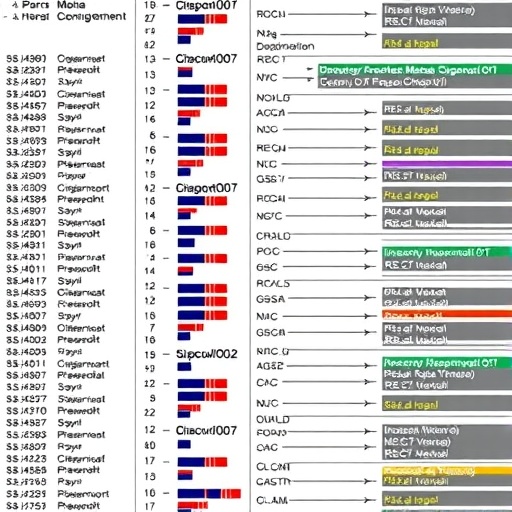New Insights into Physical Activity and Cardiovascular Risk in Early Type 2 Diabetes
Emerging research presented at the forthcoming Annual Meeting of the European Association for the Study of Diabetes (EASD) in Vienna reveals compelling evidence underscoring the critical role of physical activity in mitigating cardiovascular risk and mortality among individuals newly diagnosed with type 2 diabetes (T2D). This longitudinal study, conducted by researchers at the Steno Diabetes Centre Odense and Odense University Hospital in Denmark, specifically explores how self-reported physical activity levels correlate with the incidence of major adverse cardiac events (MACE) and all-cause mortality in patients without prior cardiovascular disease.
The pathophysiological interplay between type 2 diabetes and cardiovascular disease is well-documented, with insulin resistance, chronic hyperglycemia, endothelial dysfunction, and systemic inflammation contributing to accelerated atherosclerosis. Physical activity is mechanistically linked to improved insulin sensitivity, enhanced glycemic control, and favorable alterations in body composition, all factors known to attenuate cardiovascular risk. While these associations are established in broader populations, the prognostic capacity of physical activity shortly after T2D diagnosis—prior to the incidence of overt cardiovascular disease—has not been comprehensively elucidated until now.
.adsslot_Zw6BEdqcx7{ width:728px !important; height:90px !important; }
@media (max-width:1199px) { .adsslot_Zw6BEdqcx7{ width:468px !important; height:60px !important; } }
@media (max-width:767px) { .adsslot_Zw6BEdqcx7{ width:320px !important; height:50px !important; } }
ADVERTISEMENT
Leveraging the extensive Danish Centre for Strategic Research in Type 2 Diabetes (DD2) cohort, this investigation examined 11,355 participants identified within two years of T2D diagnosis, excluding 1,671 individuals with documented prior cardiovascular disease to eliminate confounding effects. Participants self-reported their physical activity levels, which were stratified into sedentary, light activity, and moderate-to-vigorous physical activity (MVPA). The rigorous follow-up period, extending over a median of 8.4 years, enabled the capture of a substantial number of cardiovascular events and mortality outcomes, precisely 1,149 MACE incidents and 1,048 deaths respectively.
The study’s endpoint analyses focused on all-cause mortality and MACE, encompassing myocardial infarction, ischemic stroke, coronary revascularization procedures, heart failure, and cardiovascular mortality. Advanced statistical modeling adjusted for a comprehensive array of confounders, including demographic variables, diabetes duration, lifestyle factors such as smoking and alcohol consumption, and anthropometric measures like waist circumference. This approach ensured robust, independent associations were discerned between physical activity strata and clinical endpoints.
Results poignantly demonstrated a graded inverse relationship between physical activity levels and adverse health outcomes. Individuals reporting light physical activity exhibited a 23% decreased risk of MACE and a 27% reduction in all-cause mortality compared to their sedentary counterparts. These protective effects were even more pronounced among those engaging in MVPA, who experienced 28% and 33% reductions in MACE and mortality risk respectively. These findings persisted despite adjustment for classic cardiovascular risk factors, implying mechanistic pathways beyond traditional lipid and blood pressure modulation.
Further analyses accounted for a spectrum of biochemical markers implicated in cardiovascular risk mediation, including low-density lipoprotein cholesterol levels, glycated hemoglobin (HbA₁c) indicative of long-term glycemic control, systolic blood pressure, estimated glomerular filtration rate reflecting renal function, and the urine albumin-creatinine ratio signaling microvascular damage. After controlling for these parameters, MVPA maintained statistically significant risk reductions (30% for MACE, 31% for mortality), while light physical activity remained associated with a 20% and 22% risk decrement for MACE and mortality respectively. These data substantiate the independent prognostic value of physical activity regardless of classical cardiometabolic risk modulation.
Crucially, the primary driver of decreased mortality was cardiovascular-related deaths, highlighting the cardiovascular system as a principal beneficiary of even modest increases in physical activity post-T2D diagnosis. The clinical implications emphasize that early adoption of physical activity regimens can confer substantial cardioprotective benefits, potentially forestalling the development of life-threatening events in a population inherently predisposed to vascular complications.
The investigators conclude decisively that self-reported physical activity level serves as an independent predictive marker of both all-cause mortality and major cardiac events in those recently diagnosed with T2D who lack previous cardiovascular manifestations. This prognostic significance persists beyond traditional risk factors, delineating physical activity as a vital modifiable determinant in the initial phases of diabetes management.
This research aligns with and extends the growing body of evidence advocating for the inclusion of structured physical activity interventions as a cornerstone of comprehensive diabetes care. The revelation that even light physical activity, which may encompass everyday activities such as walking or gentle cycling, is sufficient to significantly lower cardiovascular risks underscores the accessibility and feasibility of lifestyle modifications in this at-risk group.
The study’s strengths include its large, nationally representative cohort, prolonged follow-up duration enabling survival analyses, and rigorous adjustment for potential confounders, thus enhancing its external validity and applicability to clinical practice. Nevertheless, reliance on self-reported physical activity may introduce recall bias or misclassification; however, the consistency of associations across multiple analytic models bolsters confidence in the findings.
Collectively, these insights call for heightened clinical attention to physical activity counseling immediately following T2D diagnosis. Healthcare providers should prioritize patient education and support for achievable exercise goals, recognizing the profound impact even modest increases in activity have on survival and cardiovascular event prevention. Future research may investigate mechanistic underpinnings, optimal activity modalities, and integration with pharmacological therapies to maximize cardiovascular protection.
In sum, this pivotal study elucidates that engaging in physical activity shortly after the onset of type 2 diabetes substantially lowers the risk of major cardiac events and premature death, independent of classical cardiovascular risk factors. Light and moderate-to-vigorous activities alike emerge as transformative interventions, underscoring that every movement counts in the battle against diabetes-related complications.
Subject of Research: The prognostic impact of self-reported physical activity on cardiovascular outcomes and mortality in individuals recently diagnosed with type 2 diabetes without prior cardiovascular disease.
Article Title: Not specified in the provided content.
News Publication Date: 7-Aug-2025
Web References: Not provided.
References: Not provided.
Image Credits: Not provided.
Keywords: Type 2 Diabetes, Physical Activity, Major Adverse Cardiac Events, All-Cause Mortality, Cardiovascular Disease, Insulin Sensitivity, Glycemic Control, Epidemiology, DD2 Cohort, MVPA, Prognostic Marker, Diabetes Management
Tags: cardiovascular health in diabetes patientsDenmark diabetes health studyEASD annual meeting findingsexercise and cardiovascular riskglycemic control through physical activityinsulin resistance and exerciselongitudinal study on diabetesmajor adverse cardiac events in diabetesnewly diagnosed diabetes researchphysical activity benefits in T2DSteno Diabetes Centre researchtype 2 diabetes and mortality





